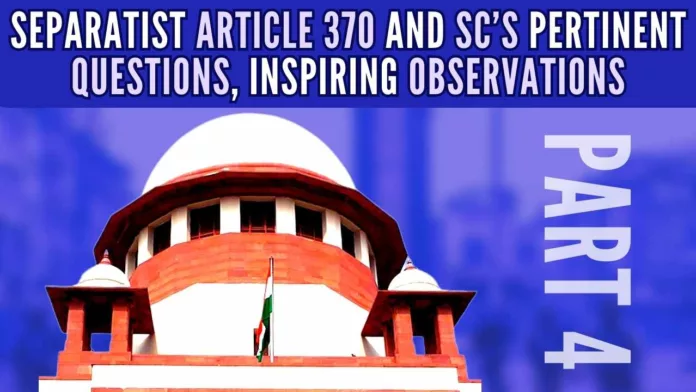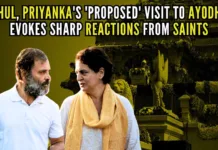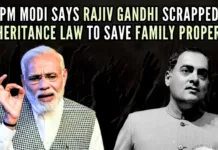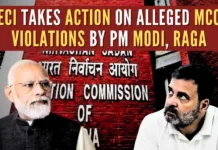
The previous 3 parts of the article can be accessed here Part 1, Part 2, Part 3. This is the fourth part
SC hearing on Article 370 abrogation
On August 23, the Chief Justice Chandrachud-headed five-judge constitutional bench made a very significant observation. It said: “There is ‘intrinsic evidence’ that Article 370 has a ‘self-limiting character’ and it seems to have worked itself out after the term of the J&K Constituent Assembly ended in 1957.” It made the observation while hearing a batch of petitions challenging the abrogation of Article 370 that accorded special status to the erstwhile State of J&K.
“Really speaking, though the Constitution of J&K framed its relationship with Union of India unless that relationship was embodied in the Indian Constitution, how will it bind the Dominion of India or Parliament for successive years after 1957,” the bench also observed. “But, if the terminal point of Article 370 is the Constituent Assembly, then is it not necessary that the work of Constituent Assembly of the State of J&K has to be embodied in this (Indian) Constitution to make it operational,” the bench, in addition, said.
In fact, the bench posed questions to senior advocate Gopal Sankaranarayanan, appearing for one of the petitioners, Soayib Qureshi, who had also challenged the Centre’s August 5, 2019 decision to abrogate Article 370.
Sankaranarayanan’s extreme view
Sankaranaraynan argued that “it is their argument that Article 370 has worked itself out once the Constituent Assembly ceased to exist and, therefore, it should not have been touched.” He contended that the “Constitution of J&K has almost all the provisions which Indian Constitution has with nominal changes”[1].
Not only this, but Sankaranaraynan also questioned the Narendra Modi government’s use of Article 367 (dealing with interpretation) to abolish J&K’s special status. “Using 367, the phrase ‘the legislature of not less than half of the states,’ could be read as Rajya Sabha or the law minister. You can say that,” he said. To be more precise, Sankaranarayanan denounced the Union government “for amending the Constitution through the device of Article 367, rather than Article 368,” and asked: “If they are allowed to do this, heavens know what they will do next.” The upshot of his whole argument in support of Article 370 was that “extreme examples are necessary to solve extreme cases”[2].
Chandrachud’s questions, observations
It needs to be underlined that CJI Chandrachud himself made a few very meaningful observations. For example, he said: “In his view, Article 370 has two terminal points – first in clause 2 where it has been said that all decisions taken prior to the existence of the Constituent Assembly shall be placed for its approval and second, in the proviso to clause 3, where it was said that the President can issue a notification declaring that Article 370 shall cease to exist or shall be operative with exceptions and modifications only on the recommendation of the Constituent Assembly of J&K…Interestingly, Article 370 is silent on what the regime should be once the Constituent Assembly is formed and has taken a decision. There is a complete silence. If there is complete silence in Article 370, then Article 370 possibly has worked itself out…”
Not just this, CJ Chandrachud asked Sankaranarayanan if this reasoning was to be accepted, then it would mean that once Article 370 worked itself out, the Constitution of J&K will fill the void and it will be the supreme document. “Now the question will be, can the Constitution of the federating unit rise above the source of the federating unit,” he asked. He added that “the point is does the court say that Indian Constitution must be read in a manner to treat the Constitution of J&K as an overriding document over the Indian Constitution.”
But more than that, the Chief Justice said that Article 370, which continued to exist in the Indian Constitution, itself pointed to its self-limiting character. “It’s there in the constitution but the provision itself points to its self-limiting character. So it is not obliterated but the text itself shows it is a self-limiting character. The operation of Article 370 has to come to an end once the Constituent Assembly of the state was formed…There is enough intrinsic evidence that Article 370 has itself a self-limiting character,” the Chief Justice said while making his observation.
At the same time, however, the Chief Justice clarified that it was not saying that all constitutional amendment orders issued for the application of the provisions of the Indian Constitution with respect to J&K were unconstitutional. “We are not saying that all these constitutional orders (COs) may have been unconstitutional. It would be improper to say that after all these (COs) were issued by statesmen who have operated this nation for the last 70 years, and we should not say that what they did was unconstitutional. It was to further the course of governance in the nation,” he said.
Besides, the constitution bench put a very pertinent question. The question was: “Does it mean that anything said by the Constituent Assembly of the State of J&K would bind the nation or bind Parliament or the Executive here?” “It had to be embodied subsequent to 1957 in a binding arrangement reflected in our Constitution which was never done,” the bench observed[3].
Nitya talks about non-existent pact
Opposing abrogation of Article 370, Nitya Ramakrishnan questioned what she termed as a “general assumption” that “J&K is not integrated and that Central rule was aimed at it.” She asserted that “political sovereignty rests with the people and there is a democratic pact which was a part of Article 370.” She went on to suggest that “if a change has to occur, then the recommendation has to emanate from an authority that is equal in mandate as compared to the Constituent Assembly.”
She also referred to the interview that the former Governor of J&K, Satyapal Malik, gave to The Wire and claimed that “he did not even know on August 4, 2019, that the Constitution (Application to Jammu and Kashmir) Order (CO) was being issued the following day (Aug 5) to withdraw the state’s special status.”
Significantly, the constitutional bench told her that “this is a post-facto statement.”
The arguments advanced by advocate Warisha Farasat were no different. She basically “relied on the legal doctrine of malice in law to challenge the events surrounding the dilution of Article 370, as three former chief ministers of the state (Farooq Abdullah, Omar Abdullah, and Mehbooba Mufti) were in detention.” She went to the extent of telling the bench that “in these days of pre-legislative consultation, what the Union government did with regard to the dilution of Article 370 clearly smacked of malice.”
Solicitor General’s intervention
On August 23, Solicitor General Tushar Mehta also intervened and the bench recorded what was termed “an important statement” that the Union government had no intention to touch the special provisions (read Article 371) applicable to the North-Eastern states. “There is no apprehension and there is no need to create apprehension, as it will have serious repercussions,” Mehta told the bench.
Thereafter, the constitution bench asked Congress MP and advocate Manish Tewari “not to discuss such apprehensions”[4]. Tiwari was representing one former Congress MLA from North-East.
Official arguments in support of reforms
However, it was on August 24 that the nation’s top law officers – Attorney General R Venkataramani and Solicitor General Tushar Mehta – started putting forth their arguments to counter the ones the petitioners’ lawyers had put forth between August 2 and 23. They put forth their arguments very forcefully to clear the cobwebs of confusion created by the petitioners’ lawyers, including Kapil Sibal, Rajeev Dhavan, and Gopal Sankaranarayanan.
Opening his arguments, the Attorney General said “It was necessary to abrogate Article 370 and there were no infirmities in the process adopted…Due process was followed. There was no wrongdoing and there was no constitutional fraud as alleged by the other side. The step was necessary to be taken. Their (petitioners’) argument is flawed and inconceivable…”[5]. He also quoted Abraham Lincoln, who “talked about balancing – losing the nation and preserving the Constitution.” He said that “by general law, life and limb must be protected. But a limb can be amputated to save a life but a life is never given to save a limb”. He further said: “Constitutional integration process of the Union and J&K was the only object of Article 370. Article 370 was designed to aid the constitutional integration process on the same line as it happened with other states. Its continued exercise over a period cannot be seen as a distortion of its original purpose. Border States are a special territory and their reorganization requires distinct consideration. The court would refer to the wisdom of parliament in the choices of actions relating to states”[6].
And to satisfy the “conscience of the court and explain the procedure adopted and how it was constitutionally permissible,’ the Solicitor General, inter-alia, said: “The relevant provision of Article 370, before its reading down in 2019, said: “Notwithstanding anything in the foregoing provisions of this article, the President may, by public notification, declare that this Article shall cease to be operative or shall be operative only with such exceptions and modifications and from such date as he may specify: Provided that the recommendation of the Constituent Assembly of the State referred to in clause (2) shall be necessary before the President issues such a notification…
On August 5, 2019, the newly inserted Article 367(4)(d) amended Article 370(3) by replacing the expression ‘Constituent Assembly of the State’ with the ‘Legislative Assembly’ of the State…”
And reflecting on the baneful influence of Article 370, Tushar Mehta said: “I will show how Article 370 worked till 2019. Some of the things are really shocking and I want the court to know about it. Because, practically two constitutional organs — State government and the President — in consultation with each other, can amend any part of the Constitution, whichever way they want, and apply it to Jammu and Kashmir…The preamble of the Indian Constitution was made applicable to J&K by way of CO under Article 370(1)(b) in 1954.
Thereafter 42nd amendment took place in 1976 and the words ‘socialist’ and ‘secular’ came to be added to the Indian Constitution but that was not made applicable (to J&K) till August 5, 2019. The Constitution of J&K did not have either the term ‘socialist’ or ‘secular’…Article 370 could have a ‘devastating effect’, had it not been repealed…
Countering the argument of the petitioners that Article 370 was a special feature and it was a privilege given to the people of Jammu and Kashmir that could never be taken away, the Solicitor General said: “There were several similarly situated princely states, which put certain conditions for integration but eventually subsumed themselves with the Union because of Article 1 of the Constitution…”
He also countered the argument of petitioners that the “instrument of the merger was a necessary attribute for complete integration otherwise there existed a kind of internal sovereignty” and said: “This court may recall that J&K never signed the instrument of the merger but then many states did not sign the instrument of the merger. But, from the date on which the Constitution of India came into force and Article 1 came into force, they became an integral part of India…”
Not just this, he also questioned the argument of the petitioners that “although J&K gave up its external sovereignty, there existed internal sovereignty with the erstwhile state” and asserted: “In my view, the petitioners are confusing internal sovereignty with autonomy. External sovereignty nobody can dispute it is with the Union of India and internal sovereignty in the facts of our case and the constitutional structure that we have accepted, would mean the autonomy of a federating unit. This autonomy exists with every State…”[7].
The Solicitor General put forth many convincing arguments to make his point and he, among other things, also said: “The moment Jinnah heard that India accepted J&K accession. Jinnah invited Nehru to Lahore to discuss the problem. See the diplomacy – Mountbatten was eager to accept the invitation and Nehru was inclined to agree with Mountbatten. (PM) Nehru and (HM) Sardar Vallabhai Patel were called to the Birla House to meet Gandhiji as Sardar Patel was against going to meet the aggressor and Lord Mountbatten was inclined. Later, it was revealed that since Nehru was running a high fever, he could not go and thus only Mountbatten was to go… The drafting committee wanted to make it clear that, though India was a federation, the federation was not a result of an agreement by the states to join a federation. Thus, no state had the right to secede from it…The country is one integral whole; it’s people a single people, living under a single imperium…”
Tushar Mehta further said: “This court (SC) will be making historical decisions in more than one way. This is the first time after 75 years that your Lordships would be considering the privileges that the citizens of J&K have been deprived of till then. Discussion on objections raised by advocate Kapil Sibal over the inclusion of a list of dates by the Centre. Because of this confusion on whether Article 370 was temporary or permanent, there was a psychological duality in the mind of a particular section (in this case Muslims in Kashmir) of our country. That duality ended with this abrogation. According to us, there was none. After going through the facts, it will be clear that a large number of fundamental rights and other rights will now be conferred upon the residents of J&K and they will be fully at par with the rest of their brothers and sisters of this country…”[8].
The Solicitor General didn’t stop just here. He further argued and his arguments read like this: “All these (princely) states, which became part of India and signed the instrument of accession, had some different wordings like taxes will be with the state, etc., which changed over time and became one federal unit. These states voluntarily joined in the process of constitution-making…PM Nehru had ‘clearly stated that no princely state could prevail militarily against the army of independent India’…Just a few weeks before becoming the vice-president of the interim government (in 1946), Nehru had ‘clearly said that Independent India would not accept the divine right of kings’ of princely states acceding to India…Article 370 was meant to be temporary. With the signing of the treaty of accession to India, the sovereignty of the erstwhile State of J&K was subsumed by the big sovereign, which is the Union of India”[9].
Chandrachud’s questions, observations
In between, the Chief Justice took note of the arguments as advanced by the Attorney General and Solicitor General and said: “We cannot postulate a situation where ends justify the means. The means have to be consistent with the ends…” He also asked the Solicitor General that “eventually he will have to explain as to how the word ‘Constituent Assembly’, which existed in clause 2 of Article 370, was replaced with the word ‘Legislative Assembly’ on August 5, 2019, the day the provisions of Article 370 were done away with.”
“You will have to argue how it was not a Constituent Assembly but a Legislative Assembly in its original form. You will have to answer how it will square up with clause 2 of Article 370 which specifically says the Constituent Assembly formed for the purpose of framing the Constitution of that State…Because there is a textual answer that may militate against your line of approach…The Centre (should) furnish a list of states out of the 562 princely states which merged with India without signing any merger agreement besides original papers existing with the Department of State under the Ministry of Home Affairs…”
Very significantly, the bench “prima facie agreed with the submissions of Mehta” and said: “The only difference was that princely states like Kathiawar, Saurashtra, and Baroda did not follow the Article 370 route but still were integrated with India. For J&K the constitution decided to go to Article 370 and for other states, there was no provision like Article 370. They merged and they were integrated completely. They accepted List 1, they accepted List 3 and they accepted the ultimate powers of the legislature of Dominion of India…Many of these states came into the Union of their own volition…We take it as voluntary but there may have been a little bit of persuasion, and there may have been politics involved. This is because of genius like Sardar Patel and there is no doubt about it. But the fact, however, remains is that in so far as J&K is concerned, it bucked that trend and went through the Article 370 route…”
Not just this, the Chief Justice agreed with the submissions and said: “Yes, this is there with every institution. This exists with every autonomous institution. Like we have autonomous authority to decide the constitutional issue, so we can’t say that internal sovereignty vests with us. We are an independent autonomous institution under the Constitution”[10].
Part V will appear on September 2…
Note:
1. Text in Blue points to additional data on the topic.
2. The views expressed here are those of the author and do not necessarily represent or reflect the views of PGurus.
Reference:
[1] Art 370 Has “Self-Limiting Character”: SC – Aug 23, 2023, Outlook
[2] Article 370 Hearing: SC Told Extreme Examples Are Necessary To Solve Extreme Cases – Aug 23, 2023, The Wire
[3] SC Says ‘Unacceptable’ That Article 370 Ceased To Exist After 1957 Argument – Aug 23, 2023, Outlook
[4] ‘No intention to touch special provisions related to North-East’ – Aug 23, 2023, Millennium Post
[5] Supreme Court hearing on Article 370 abrogation | Day 10 – Aug 23, 2024, The Hindu
[6] Article 370: Supreme Court asks Centre for list of states that did not sign merger agreements – Aug 23, 2023, India Today
[7] Hearing on Article 370: Petitioners confusing internal sovereignty with autonomy, Centre tells Supreme Court – Aug 24, 2023, The Tribune
[8] J&K not the only princely state with Constitution, Centre tells Supreme Court – Aug 24, 2023, India Today
[9] Modi govt starts arguments in Article 370 hearing, invokes Nehru — ‘won’t accept divine right of kings’ – Aug 24, 2023, The Print
[10] No ‘constitutional fraud’ in abrogating Article 370: Centre tells SC – Aug 24, 2023, The Week
PGurus is now on Telegram. Click here to join our channel and stay updated with all the latest news and views
For all the latest updates, download PGurus App.
- ‘Kashmir My core constituency’: Revisiting July 12, 2003 to understand politics, Omar Abdullah-style - March 15, 2024
- Total deviation from traditional approach: Seven takeaways from PM Modi’s March 7 Srinagar visit - March 9, 2024
- Status of political parties: Why is further J&K reorganization imperative? - March 1, 2024











Who paid the 27 lawyers and how much, for wasting the nations time which should have been used to reduce the backlog to some extent.